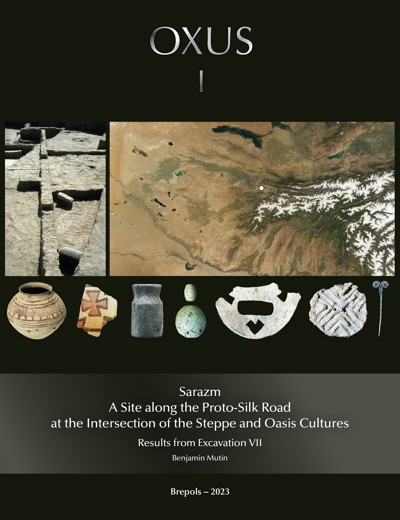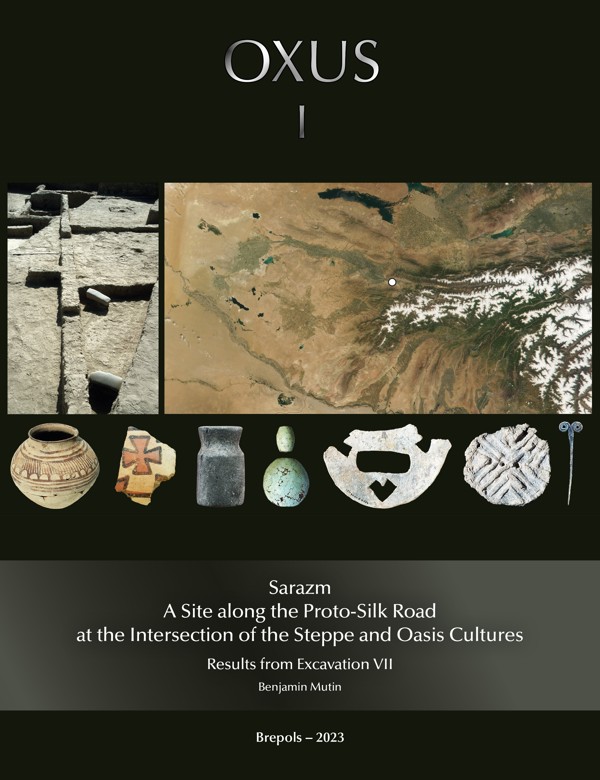Sarazm: A Site along the Proto-Silk Road at the Intersection of the Steppe and Oasis Cultures
Results from Excavation VII
Benjamin Mutin
- Pages: xxvi + 258 p.
- Size:216 x 280 mm
- Illustrations:20 b/w, 181 col., 74 tables b/w., 8 maps color
- Language(s):English
- Publication Year:2024
- € 110,00 EXCL. VAT RETAIL PRICE
- ISBN: 978-2-503-60294-3
- Paperback
- Available
- € 110,00 EXCL. VAT RETAIL PRICE
- ISBN: 978-2-503-60295-0
- E-book
- Available
Benjamin Mutin is an archaeologist who has worked in Tajikistan, Afghanistan, Pakistan, Iran, Oman, Jordan, and Saudi Arabia. He excavated at Sarazm, Tajikistan between 2011 and 2014. His main field of research is the cultures and intercultural interactions within and between the Middle East, Central Asia and South Asia from the Neolithic to the Bronze Age periods.
Sarazm, in modern-day Tajikistan, is rightly famous as an archaeological site. A Chalcolithic and Bronze Age settlement, it formed part of a cultural and economic network that stretched from the steppe of Central Asia across to the Iranian Plateau and the Indus. Between 1984 and 1994, fieldwork led by a joint Tajik-French project took place at Excavation VII, yielding unique archaeological contexts and materials that shed light on Sarazm’s multicultural nature, its evolution through time, and the varied activities that took place at the site. Now, in this new volume, the first comprehensive description and analysis of all available data from Excavation VII is presented, and the data from this excavation contextualized both at site level and within the broader setting of the Steppe and Oasis cultures of the IVth and IIIrd millennia BCE. The author offers functional, cultural, and chronological conclusions about the exposed occupations, as well as putting forward new interpretations and hypotheses on this important settlement.

